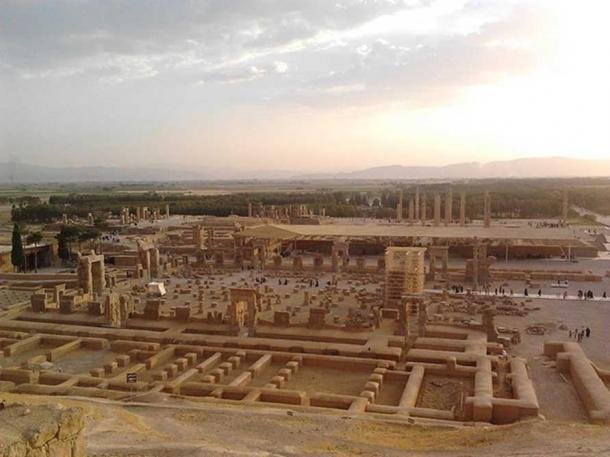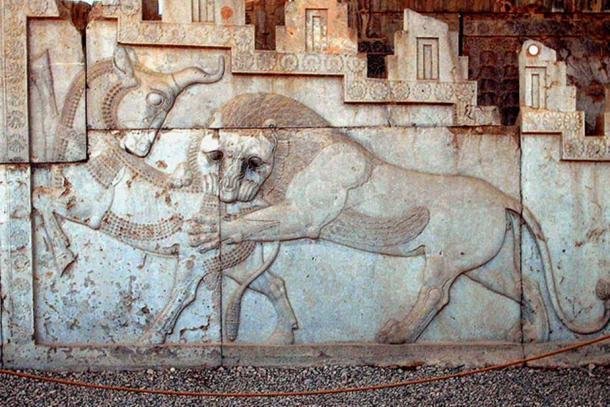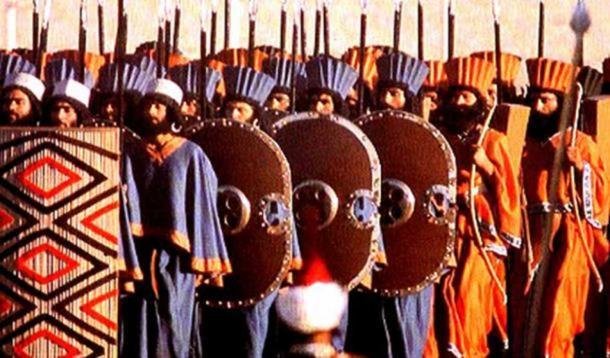
The ruins of Persepolis.
Is an elaborate Palace equivalent to more power?
First, what is Persepolis? In addition to the ancient main city of one of the largest pre-Roman empires in history, Persepolis was built at the foot of the "Mountain of Mercy" in modern day Iran. The city itself was modeled after the earlier Mesopotamian complexes, the power and strength of the Babylonian, Akkadian and Assyrian empires that resonate with the leaders of Persia in the sixth century BC. C. However, while Persepolis played the role of capital, scholars believe that it was used both to impress visually and to deal with judicial and military matters. After all, the more elaborate the palace, the more power the empire must have ... At least, to the minds of the ancients. Thus, the large terrace of the Persepolis audience hall was intentionally decorated to express the epitome of Persian leadership.

Today, the terrace and the bones of the courtroom (the Apadana) remain. The steps leading to the Apadana (begun under Darius I in the VI-V centuries and completed under Xerxes I in the fifth century BC) were formed in their day by a "grandiose architectural creation, with its double access staircase , walls covered by sculpted friezes ... gigantic winged bulls ... "The center of these friezes is the representation of several members of the Akkadians. Interestingly, many of these traits still remain at varying degrees of survival. The shallow carved friezes have resisted time, nature and war, making their permanence even more intriguing.

The most outstanding reliefs that have survived the centuries are those located on the east, north and central stairs of the Apadana. Only in the eastern section you can see a variety of representations. It is believed that the former represents the Persian king receiving gifts or tributes from his subjects. Whether this represents a real event, or an imagined display of Persian power, is a matter of debate. On the north side is the representation of the Persian monarchy mentioned above, although, to be more specific, this image represents the members of the elite of the Persian culture processing with the king, probably ordered by importance.
It is believed that the central images of the eastern stairs are representations of eight Persian warriors. Keeping the iconography of the Persian capital, these soldiers are under a winged sun with a sphinx (a mythological creature with the body of a lion and the head of a man) on each side of the group. Art historians believe that this carving represents the Persian immortals, an elitist class of warriors constantly prepared for battle.



Congratulations! This post has been upvoted from the communal account, @minnowsupport, by exe8422 from the Minnow Support Project. It's a witness project run by aggroed, ausbitbank, teamsteem, theprophet0, someguy123, neoxian, followbtcnews/crimsonclad, and netuoso. The goal is to help Steemit grow by supporting Minnows and creating a social network. Please find us in the Peace, Abundance, and Liberty Network (PALnet) Discord Channel. It's a completely public and open space to all members of the Steemit community who voluntarily choose to be there.
Downvoting a post can decrease pending rewards and make it less visible. Common reasons:
Submit
This post has received a 0.31 % upvote from @drotto thanks to: @banjo.
Downvoting a post can decrease pending rewards and make it less visible. Common reasons:
Submit